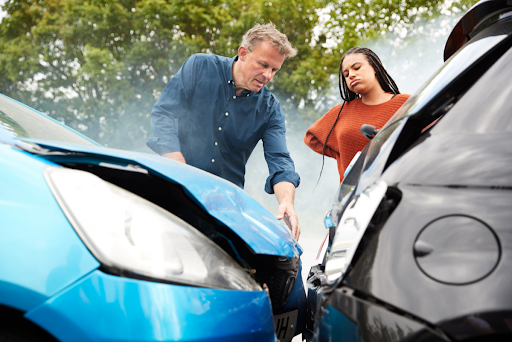If you are partly responsible for a car accident, you may have many questions and concerns. You might wonder how this will affect your chances of getting compensation for damages. You may also think about how it impacts insurance claims and any legal matters.
Comparative negligence is a way to decide who is responsible when more than one person is involved in an accident. Your percentage of fault will affect how much money you can get for your damages.
When you are involved in an accident where both parties share some blame, the percentage of fault assigned to each person will affect how much money you can recover.
Whether you are talking to insurance companies or trying to get a fair settlement, it’s important to have the right information and support. This is why it’s a good idea to hire an experienced car accident lawyer who can help you handle these complicated issues.
This guide will explain the important things you need to know if you are partially at fault in a car accident.
The Types of Comparative Negligence
There are two main types of comparative negligence:
- Pure Comparative Negligence: You can still receive compensation even if you are mostly at fault for the accident. Your payment will be lowered based on how much fault you have. For example, if your damages are $10,000 and you are 40% responsible, you would get $6,000.
- Modified Comparative Negligence: In some states, if you are more than 50% or 51% at fault, you cannot receive any money for your damages.
Determining Fault in a Car Accident
Determining fault in an accident requires a thorough review of the evidence. Various parties, including the police, insurance companies, and sometimes lawyers, work to piece together what happened during the accident. Here are the means through which they typically do this:
- Police Reports: These typically include important details, such as whether any rules were broken, the weather conditions, and witness observations.
- Witness Statements: People who saw the accident can share their views, giving more information about what happened before and during the crash.
- Video Evidence: Recordings from dashcams, security cameras, or smartphones can provide clear pictures of what took place.
- Reconstruction Experts: Some professionals can recreate the accident scene to help understand the order of events.
Insurance Implications When You’re Partially At Fault
When there is an accident and someone is found to be partly responsible, whether you can get compensation depends on the rules in your state and your insurance policy.
In states where the person at fault pays for damages, the driver who caused the accident has to pay. But if you are also partly at fault, the amount you can get may be reduced based on your percentage of fault.
In states where insurance pays regardless of fault, your insurance will cover basic expenses like medical bills. However, if you are found to be partly at fault, it could make your insurance costs go up.
If another person in the accident is also partly responsible, their insurance might pay you some money based on how much fault they have. To handle these situations well, it is important to keep good records and understand your insurance policy. Also, do not admit fault too soon, as it could make things harder for you later.
Why You Should Hire an Experienced Car Accident Lawyer
Dealing with a case where both sides share blame can be difficult, but an experienced lawyer can help you. They will collect evidence, question the other side’s claims, and make sure your side of the story is told clearly.
Lawyers know how to examine police reports, talk to witnesses, and piece together what happened to help reduce how much blame is placed on you. They can also negotiate better deals with insurance companies, which often try to pay less in cases where both parties are at fault.
If you don’t have a good lawyer to help you, you might end up getting less money than you deserve.






